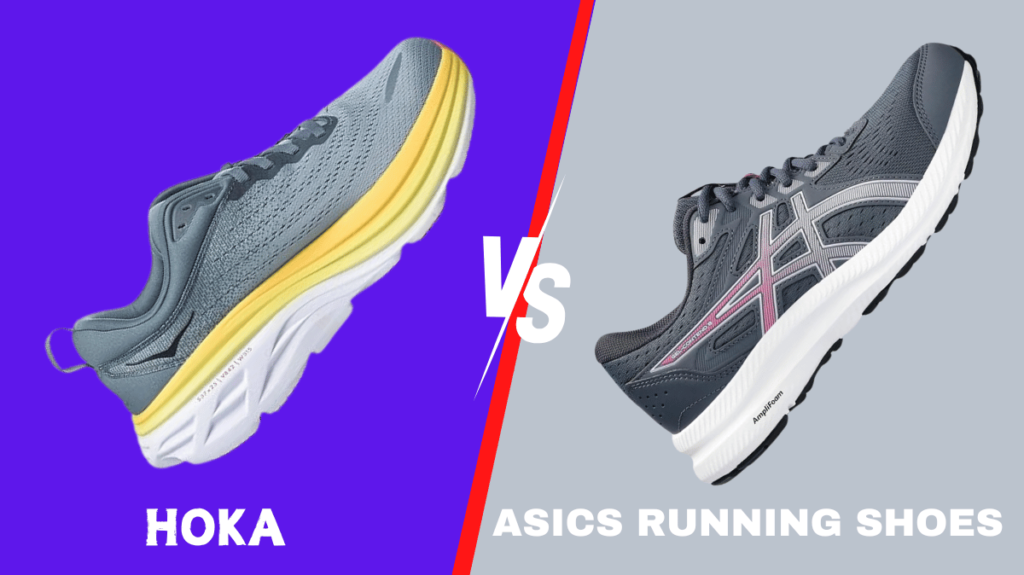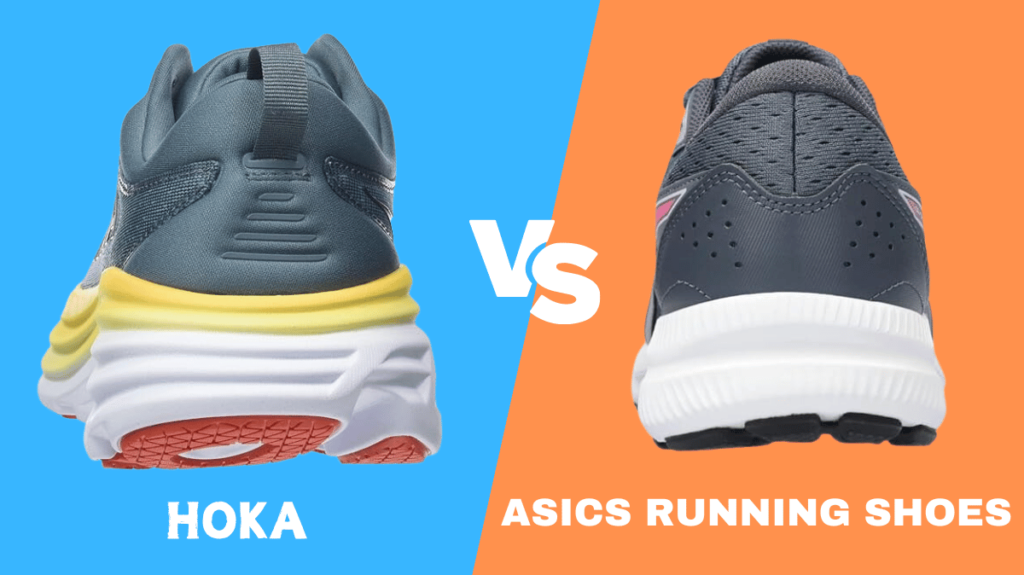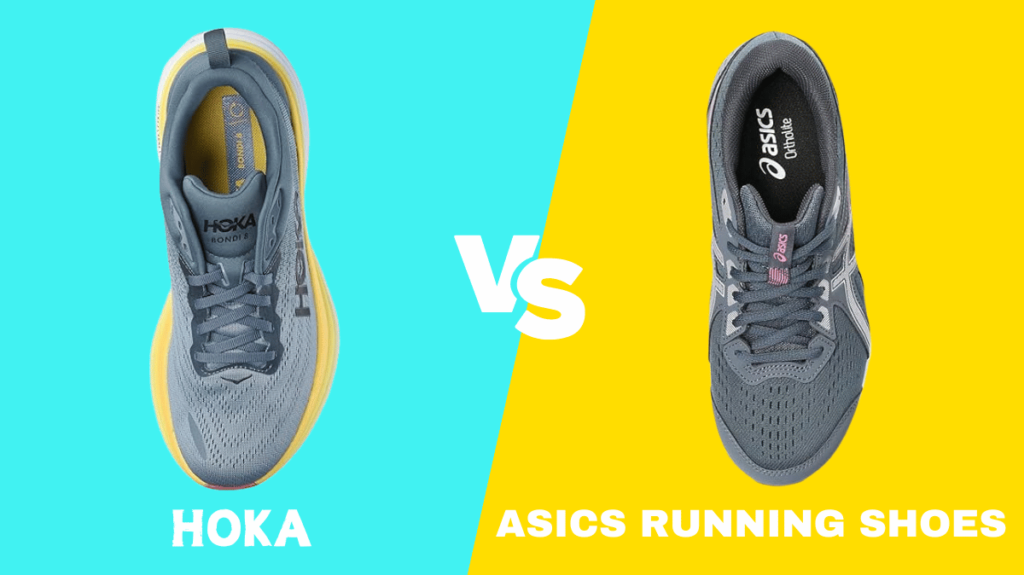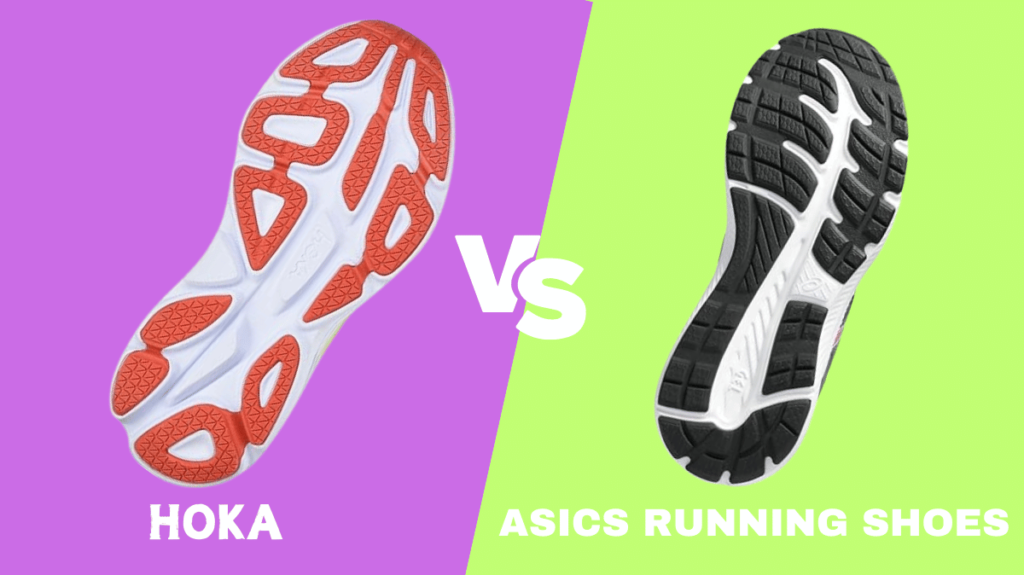Physical Address
304 North Cardinal St.
Dorchester Center, MA 02124
Physical Address
304 North Cardinal St.
Dorchester Center, MA 02124
Running shoes are one of the most important pieces of gear for anyone who runs, whether you’re training for a marathon, jogging for fun, or simply getting in your daily steps. Two brands that are widely respected in the running community are Hoka and Asics. Both companies have a reputation for making high-quality, durable shoes, but they do so in different ways. So, how do you decide which brand is the best fit for you? This article will compare Hoka and Asics across several important categories to help you make an informed decision.

| Feature | Hoka | Asics |
| Comfort | Maximum cushioning with EVA foam; soft landings; ideal for long-distance running | GEL technology; balanced cushioning; targeted support for high-impact areas; suitable for both short and long runs |
| Style and Design | Chunky, bold design with bright colors; maximalist look | Sleek, traditional design; more conservative, performance-focused |
| Sizing Consistency | True to size; wider forefoot for extra room | Consistent sizing; snugger fit, especially around the arches |
| Fit and Support | Wider, roomier fit; excellent for runners needing more space in the toe box | Snug fit, especially around the midfoot; great support for overpronation and flat feet |
| Breathability | Breathable mesh uppers but thicker soles can trap heat | Breathable engineered mesh uppers with moisture-wicking insoles |
| Durability | Durable EVA soles; some complaints about the upper material wearing out | High durability with tough rubber outsoles and strong upper construction |
| Price Range | $130 – $200; fewer budget models | $100 – $180; more budget-friendly options available |
| Customer Reviews | Loved for superior cushioning and comfort, but some find the design too bulky | Praised for support, durability, and fitting for specific foot conditions like overpronation |
Comfort is one of the most important factors to consider when buying running shoes. If your shoes aren’t comfortable, your feet will feel the pain during and after a run.
Hoka shoes are well known for their thick soles and superior cushioning. This extra padding is designed to provide a soft, comfortable experience even on long-distance runs. Hoka uses a lightweight EVA foam in their midsoles, which gives the shoes their signature “cloud-like” feel. This makes them ideal for runners who prioritize comfort over speed or agility.
Asics takes a different approach to comfort. Instead of adding extra thickness to the midsole, they focus on strategically placing cushioning where it’s needed most. Asics’ signature GEL technology provides excellent shock absorption in high-impact areas like the heel and forefoot, making them comfortable for both long and short runs.
| Brand | Cushioning Type | Key Comfort Feature | Ideal For |
|---|---|---|---|
| Hoka | EVA Foam | Plush cushioning, soft landings | Long-distance runners |
| Asics | Gel Cushioning + EVA | Targeted support in high-impact areas | Runners who need arch support |
Looks matter too! Even though functionality is key, you still want your running shoes to reflect your style. Let’s look at the design aspects of Hoka and Asics.
Hoka shoes are immediately recognizable thanks to their thick, maximalist soles. This gives the shoes a somewhat bulky appearance, but it also makes them stand out. If you like shoes that look modern and are willing to trade sleekness for comfort, Hoka may be the right choice for you.
Asics, on the other hand, sticks to a more traditional, streamlined design. Their shoes tend to look sleeker and more performance-focused. While Asics also offers shoes in a range of colors, their designs are usually more conservative compared to Hoka.
| Brand | Style/Design | Appearance | Color Options |
|---|---|---|---|
| Hoka | Chunky, maximalist design | Bold and eye-catching | Bright and bold |
| Asics | Sleek, traditional | Streamlined and classic | Conservative to colorful |

Now, let’s look at the core differences between the two brands.
The most noticeable feature of Hoka shoes is their oversized midsoles. These thick soles are designed to provide maximum cushioning, which makes them ideal for long runs or for runners who want extra protection for their joints. Hoka shoes are also lightweight, despite their bulky appearance, which is another factor that makes them popular among long-distance runners.
Asics focuses more on performance and support than on cushioning. Their shoes feature GEL technology that targets specific areas of the foot, offering cushioning where it’s most needed. Asics also offers a variety of shoes designed to correct common foot issues like overpronation or flat feet.
Having shoes that fit perfectly is crucial, especially when you’re putting in lots of miles on the road or the trail.
Hoka shoes generally run true to size, but their wider toe box can make them feel roomier than other brands. If you have narrow feet, you may need to try a half size smaller or look for a narrower model.
Asics has a long-standing reputation for consistent sizing. If you’ve worn Asics shoes before, you can usually stick with the same size in newer models. The shoes generally fit snugly, which some runners prefer for the extra support.
When investing in a good pair of running shoes, it’s essential to know what kind of reputation the brand has.
Although Hoka is a relatively new brand compared to Asics, it has quickly gained a loyal following among runners, particularly long-distance and trail runners. Hoka’s shoes are often praised for their unique designs and unparalleled comfort. Their reputation for providing excellent cushioning has made them a favorite for people with joint pain or those recovering from injuries.
Asics has been in the running shoe game for decades and is known for producing reliable, high-quality shoes. They are often the preferred brand for serious athletes and runners who need specific support, like overpronation control or arch support. Their shoes are also known for their durability, often lasting hundreds of miles before showing signs of wear.
Nobody wants sweaty feet while running, so breathability is an important feature.
Hoka shoes often feature breathable mesh uppers, which allow air to circulate and keep your feet cool during your run. However, because of their thick soles, some runners have found that their feet can get warmer on longer runs.
Asics shoes often feature engineered mesh uppers and lightweight materials that promote airflow. Many of their models are designed specifically to keep your feet cool, even during intense workouts or races.

You want your running shoes to last, especially if you’re investing in a higher-end pair. Let’s see how Hoka and Asics compare in terms of durability.
Hoka shoes are built to last, particularly in terms of their cushioning. The thick EVA foam soles can withstand hundreds of miles before showing signs of compression or wear. However, some users report that the mesh uppers can wear out faster than the soles, especially if used in rugged conditions.
Asics shoes are known for their durability, especially in their performance models. The outsole is often made from high-quality rubber, and the upper is designed to withstand both everyday runs and more intense use. Asics’ trail-running models, in particular, are built to handle rough terrain without breaking down.
The way a shoe fits can make or break your running experience.
Hoka shoes are known for their wide fit, which is excellent for runners with wider feet or those who want more room in the toe box. Hoka also provides excellent support, especially for long-distance runners who need their shoes to stay comfortable for miles on end.
Asics shoes tend to have a snugger fit, especially around the midfoot and arch. This provides extra support for runners who overpronate or need additional arch support. The structured design of many Asics models helps keep your foot in place, reducing the risk of injury.
Price is always a factor when choosing the right pair of running shoes.
Hoka shoes tend to be on the more expensive side, especially their premium models. However, most runners who choose Hoka feel the extra cost is worth it for the superior comfort and cushioning.
Asics offers a wider range of prices, with some models being quite affordable while others fall into the high-end category. This makes Asics a more accessible brand for runners who want good quality without breaking the bank.
| Brand | Average Price Range | High-End Models | Budget Models |
|---|---|---|---|
| Hoka | $130 – $200 | Yes | Fewer budget options |
| Asics | $100 – $180 | Yes | Several budget models |
Customer feedback is a great way to gauge how well a brand performs in the real world.
Hoka shoes receive rave reviews for their comfort, especially among long-distance runners and those with joint pain. Many users appreciate the soft, cushioned ride that Hoka shoes offer. However, some people find the shoes too bulky or heavy for their liking, especially for shorter or faster runs.
Asics is a brand that receives consistently high reviews for their support and durability. Runners who overpronate or need extra arch support often turn to Asics for their structured, supportive designs. Asics shoes are also praised for their longevity, with many users reporting that they last for hundreds of miles.

In conclusion, both Hoka and Asics offer fantastic running shoes, but they cater to different types of runners. If you’re looking for maximum cushioning and a soft, comfortable ride for long-distance running, Hoka is likely your best bet. On the other hand, if you need structured support and durability, particularly if you have specific foot issues like overpronation, Asics is the way to go.
Ultimately, the best running shoe for you depends on your personal preferences, running style, and foot shape. Both Hoka and Asics are top-tier brands, so you can’t go wrong with either choice.
Hoka is often preferred for long-distance running due to its thick cushioning and comfort. Asics also offers great support for marathon runners, especially for those who need extra arch support.
Despite their chunky look, Hoka shoes are lightweight. Asics shoes vary depending on the model, but they tend to have a more streamlined design.
Asics offers more budget-friendly options, while Hoka tends to be more expensive, especially for their premium models.
Both brands offer durable shoes, but Asics is often praised for its longevity, especially in their high-performance models.
Yes, Hoka’s thick cushioning can help reduce impact and is often recommended for runners with joint issues.